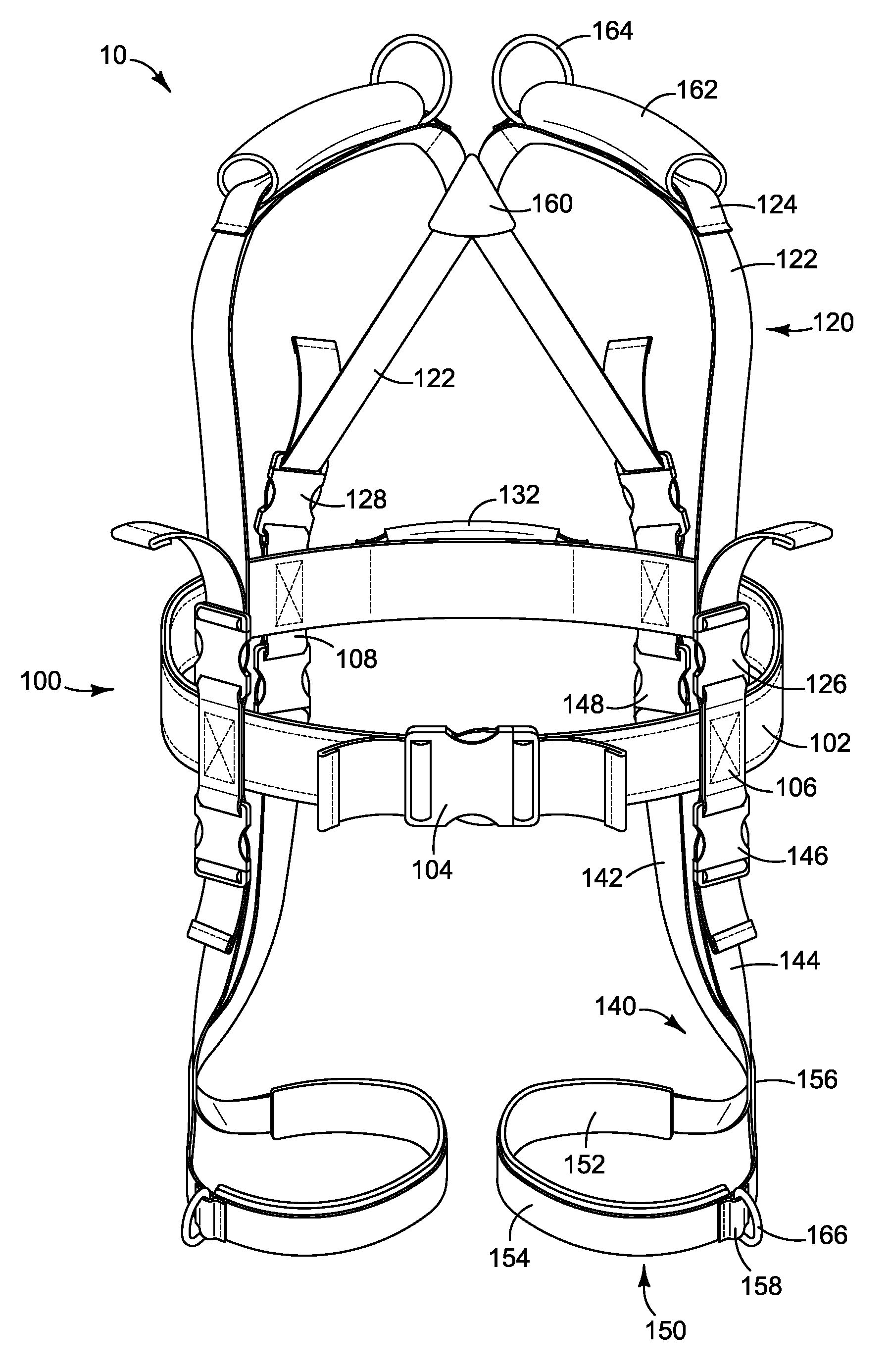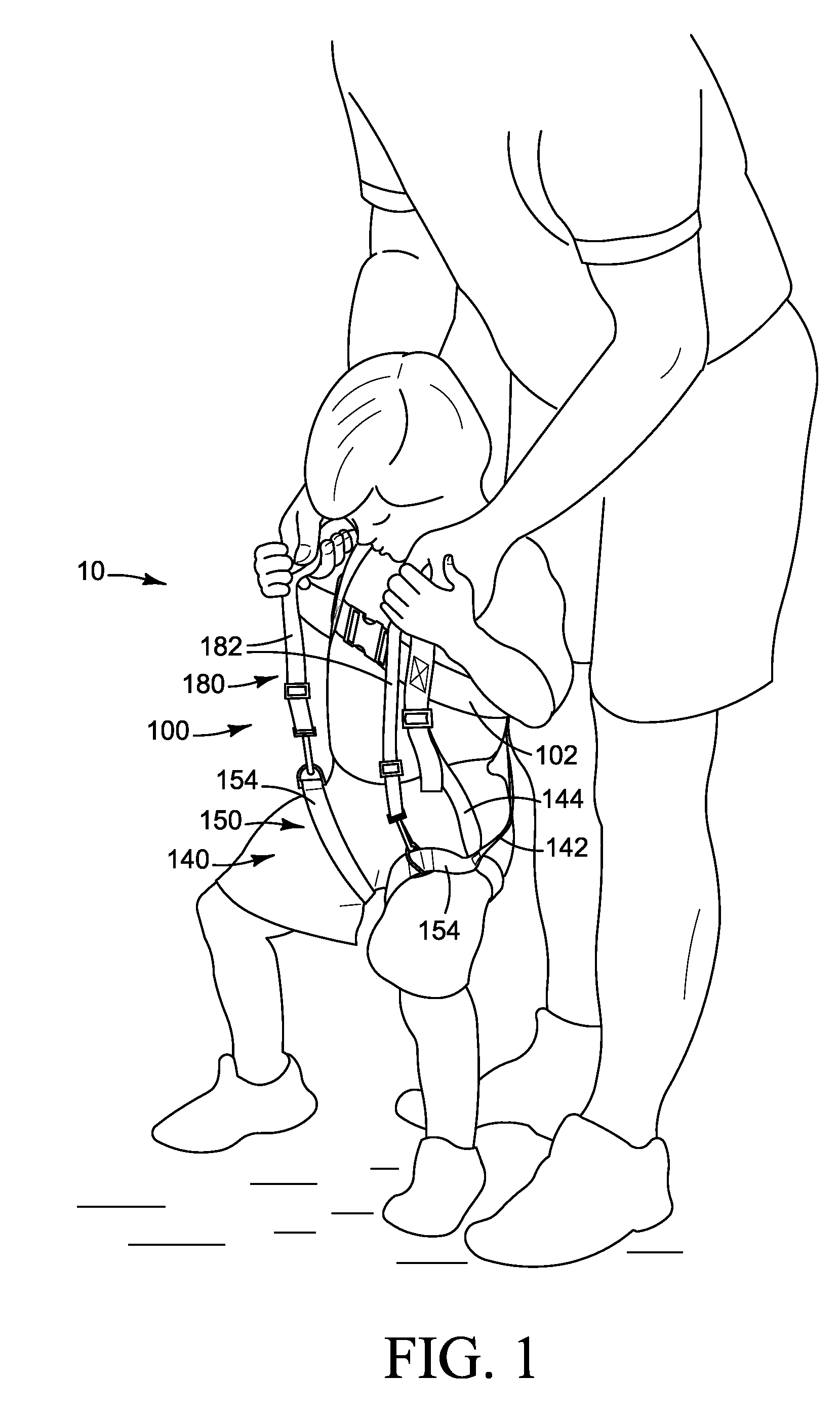Gait training harness
a harness and gait technology, applied in the field of harnesses, can solve the problems of little other assistance, weakened position of the trainer, unsuitable for immediate requirements, etc., and achieve the effect of greater freedom of movemen
- Summary
- Abstract
- Description
- Claims
- Application Information
AI Technical Summary
Benefits of technology
Problems solved by technology
Method used
Image
Examples
Embodiment Construction
[0055]The present invention is primarily a training device to assist a trainer to teach a child to walk or crawl, or to support and assist a disabled person to develop the motor coordination skills required for walking with a proper gait. FIG. 1 depicts the presently invented gait training harness in one exemplary use. Here, an adult trainer is seen to be standing over a child trainee without stooping significantly. This trainer is using shoulder handles to support the child who is learning to walk. Other modes of use will now be described with reference to FIGS. 2 through 4 in which the trainer and trainee have been removed in order to show more clearly the features of the harness itself.
[0056]The foundation of the device, as shown in the frontal view of FIG. 2, is a Full Body Harness (FBH) 100 which begins with a torso-encircling belt 102 that is secured around the torso of the trainee by a torso belt buckle 104. The Full Body Harness 100 is completed by the addition of two should...
PUM
 Login to View More
Login to View More Abstract
Description
Claims
Application Information
 Login to View More
Login to View More - R&D
- Intellectual Property
- Life Sciences
- Materials
- Tech Scout
- Unparalleled Data Quality
- Higher Quality Content
- 60% Fewer Hallucinations
Browse by: Latest US Patents, China's latest patents, Technical Efficacy Thesaurus, Application Domain, Technology Topic, Popular Technical Reports.
© 2025 PatSnap. All rights reserved.Legal|Privacy policy|Modern Slavery Act Transparency Statement|Sitemap|About US| Contact US: help@patsnap.com



